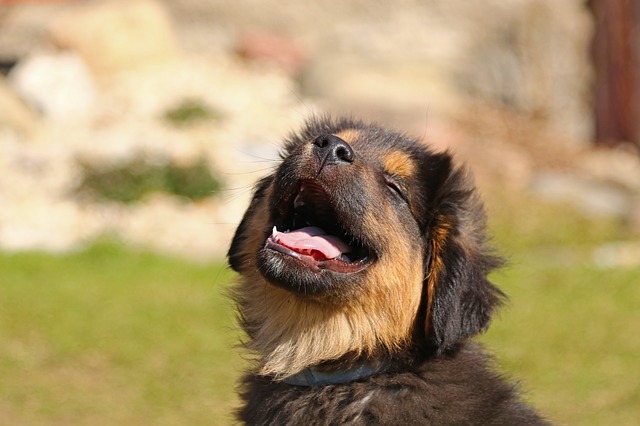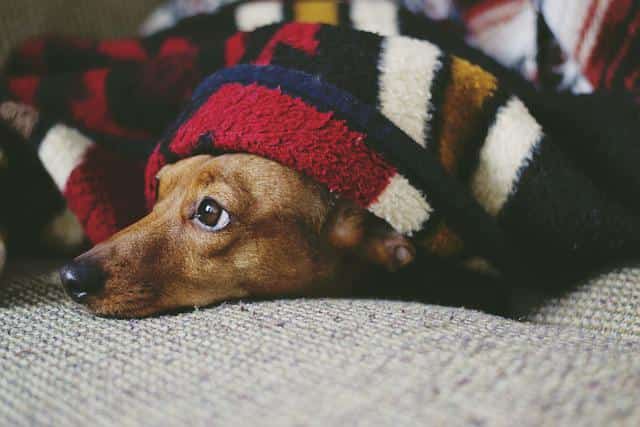
Leaving your puppy alone can be a stressful experience for both of you. Puppies are used to being around their family and friends all the time, and suddenly being left alone in a strange place can be very scary. This can lead to whining, barking, and even potty accidents. In this blog post, we will provide the steps that will help you train your puppy to be comfortable being alone!
The first step is to start by leaving your puppy alone for short periods. This will help them get used to the idea of being away from you. You can start by putting them in their crate with a few toys, and gradually increase the amount of time they are left alone.
It is important to make sure that they have something to do in the crate, such as a Kong toy filled with food. This will help keep their minds occupied and prevent them from getting bored.
The second step is to create positive associations with leaving. This means that every time you leave, you should give your puppy a treat. This will help them associate being alone with something positive. Exercise is also important before you leave like playing fetch. A tired puppy is more likely to sleep than one who is full of energy.
The third step is to only let your pup out of the crate when he is calm. This means that you should not make a big deal when you enter or leave the room. If your puppy gets excited, it will only make the situation worse.
The fourth step is to hire a pet sitter. This can be a great way to train your puppy to be alone. This will help them get used to being away from you for longer periods of time.
The fifth step is to train your puppy to not cry when alone. This can be done by teaching them the “quiet” command. Once they learn this, you can leave for short periods of time without them making a fuss.

How to teach the quiet command to a dog
One of the most important commands you can teach your dog is the quiet command. This command can be very helpful in situations where your dog is barking excessively or when you need them to be quiet for a specific period of time. Here are some tips on how to teach your dog the quiet command:
-Start by teaching your dog the speak command. This will help them understand that when you give the quiet command, they need to stop barking.
-When your dog is barking, say the word “quiet” in a firm voice. You may also need to use hand signals or body language to emphasize the command.
-If your dog stops barking when you give the command, immediately give them a treat or praise them verbally.
-If your dog does not stop barking when you give the command, do not provide a treat or verbal praise. Instead, try using a different technique such as asking them to sit or lie down.
With patience and consistent training, your dog will eventually learn the quiet command and be able to respond to it in different situations. This is a great command to have in your arsenal as it can help reduce stress for both you and your dog.
How long does it take for a puppy to get used to being alone?
This is a question that many new puppy owners ask. Every puppy is different and will adjust to being alone at their own pace. However, most puppies will start getting comfortable in about 1 to 2 weeks.
One of the most important things you can do is to make sure that your puppy has a safe, comfortable place to stay when they’re alone. This could be a crate, an exercise pen, or even just a designated area in your home.
It’s important that your puppy feels like this is their space and they’re not being isolated from the rest of the family. You should also make sure that your puppy has plenty of toys and chewables to keep them occupied while they’re alone.
Another thing to remember is that you should never leave your puppy alone for longer than they can handle. Start with short periods of time (a few minutes to an hour) If you need to be away from home for an extended period, it’s best to have someone else watch your puppy or take them to a doggy daycare.
You may need to hire a pet sitter while training alone time
Alternatively, you can ask a friend or family member to look after your pet while you’re out. If you have multiple pets, it may be worth hiring a professional pet sitter so that they can all receive the care and attention they need.
Whichever option you choose, make sure you leave clear instructions and contact details so that your pet can be taken care of in your absence.
Training your pet to enjoy being alone doesn’t have to be difficult – with a little patience and perseverance, you’ll soon see results. And once they’ve mastered the art of being solo, you’ll be able to enjoy some well-earned peace of mind knowing that your furry friend is happy and content even when you’re not around.
Another option is to take your pet with you on vacation.

Vacationing with your pet can be a great experience for both of you. Just make sure to do your planning ahead of time, so that everything goes smoothly. And, most importantly, have fun!
Another option for vacationing with your pet is to look into pet-friendly hotels and resorts. This way, you can bring your furry friend along without having to worry about finding a place to stay that will accept them.
Chances are, your pet will love being able to explore new places with you by their side. Just be sure to do your research before taking this route, so that you know what to expect and are prepared for anything that might come.
Only let your pup out of the crate when he is calm.
If your pup is barking or whining in the crate, wait until he stops before opening the door. This will help teach him that being calm gets him what he wants. Once he’s quiet, open the door and let him out. If he starts barking or whining again, close the door and wait for him to settle down. Only open it when he’s quiet.
If your pup is having a tough time settling down in the crate, try putting a shirt that you’ve worn recently in the crate with him. The scent will help him feel comforted and safe. You can also try feeding him in the crate to help create a positive association.
Lastly, make sure the crate isn’t too big. He should be able to stand up and turn around comfortably, but it shouldn’t be so large that he can use one end as a bathroom and the other as a bedroom.
By following these tips, you can help your pup learn to love his crate and see it as a safe, comfortable place.
When should I start training my puppy to be alone?
There’s no definitive answer to this question, as it will depend on your individual puppy’s needs and temperament. However, it’s generally advisable to start training your puppy to be comfortable spending time alone from an early age.
Three to four months old is a great time to train most dogs. This will help to prevent separation anxiety from developing, and will make it easier for you to leave your pup alone when necessary.
How to train a puppy to be outside alone
One common challenge that new puppy parents face is learning how to train their puppy to be outside alone. This can be a difficult task, but there are some things you can do to help your puppy feel comfortable and safe when they’re by themselves.
Here are a few tips for training your puppy to be outside alone:
-Create a safe and comfortable space for your puppy to stay in when they’re outside. This could be a small pen or fenced-in area.
-Make sure that the area is well-ventilated and has plenty of shade.
-Provide your puppy with some toys or chew toys to keep them occupied.
-If possible, try to spend some time with your puppy outside so they can get used to being in the space without you.
Hopefully these tips will help you as you start training your puppy to be outside alone.
How to train a puppy to not cry when alone

One way to train your puppy not to cry when left alone is by teaching them the “settle” command. This is a cue that tells your puppy to go to a specific spot and lie down.
To teach this cue, start by having your puppy on a leash and have them sit or stand next to you. Then, say the cue “settle” in a calm voice and take a step back.
If your puppy remains sitting or standing, praise them and give them a treat. If they start to follow you, simply turn and walk the other way. Repeat this process until your puppy is consistently staying in one spot when you say the cue “settle.”
How to keep your dog away from a Christmas tree
If you’re worried about your dog getting too close to your Christmas tree, there are a few things you can do to keep them away. You can try putting up a baby gate or fencing around the tree, or spraying it with a pet-safe repellent.
You can also train your dog to stay away from the tree by using positive reinforcement – rewarding them when they stay away from the tree, and ignoring them when they go near it.
With a little patience, you can keep your dog safe and your tree intact this holiday season.
How to train a rescue dog to be left alone
If your new rescue dog is anything like ours were, they may have some separation anxiety. This can present itself in a number of ways including barking, howling, whining, pacing, and/or destroying items in the home while you’re away.
While it’s understandable to want to coddle your new furry friend, it’s important to begin teaching them that it’s okay to be left alone.
The first step is to crate train your dog. This will provide them with a safe space of their own where they can relax and feel comfortable. Be sure to introduce the crate gradually and pair it with positive reinforcement in the form of treats, toys, and/or praised so that they associate it with good things.
Once your dog is crate trained, you can begin leaving them in the crate for short periods of time while you’re home. This will help them get used to being away from you and help to build their confidence.
Start with just a few minutes at a time and slowly increase the amount of time as they become more comfortable. If your dog is still having trouble after trying these tips, you may want to consult with a professional trainer or behaviorist.
How to train a 4 month old puppy

Four months is an ideal age to start training your puppy. By this age, they should have received all of their vaccinations and be able to socialize with other dogs. Here are some tips on how to train your four-month-old puppy:
The first step is to enroll your puppy in a basic obedience class. This will teach them the basics, such as sit, stay, come, and down. It is also a great way for you to socialize your puppy and meet other dog owners.
If you are not able to take a class, there are many resources available online or at your local pet store. One of the most important things to remember when training your puppy is to be consistent. Choose one command and stick with it until they have mastered it.
Puppies have short attention spans, so keep training sessions short, around five minutes. Puppies also learn best through positive reinforcement, so be sure to praise them when they do something good.
With a little patience and consistency, you will have a well-trained four-month-old puppy in no time!
One of the most important things to remember when training your puppy is to be consistent. Choose one command and stick with it until they have mastered it.